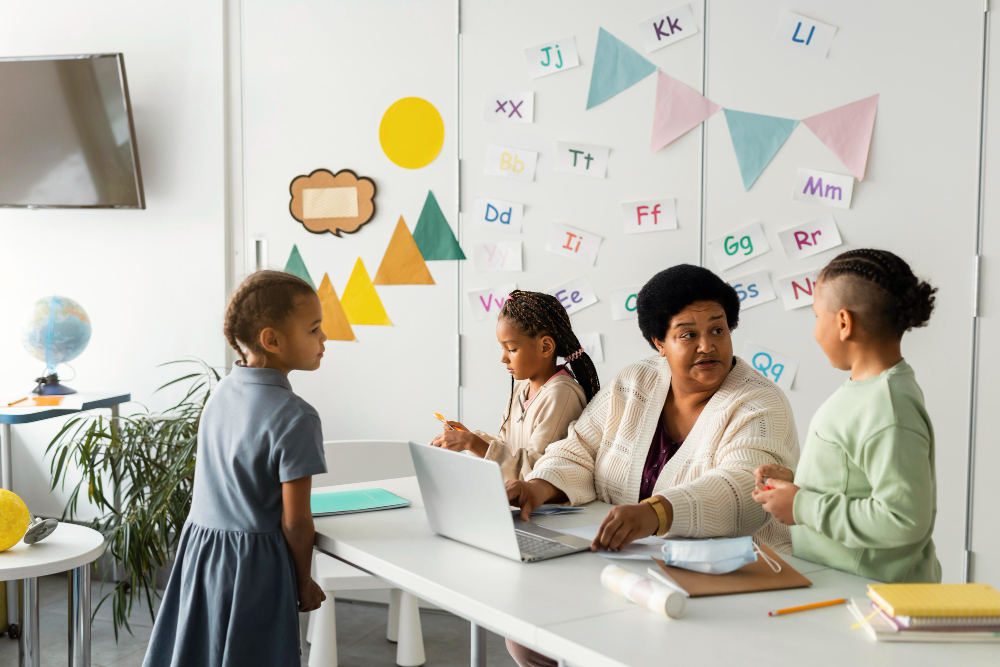Effective communication is the heartbeat of any thriving school. It’s what connects teachers, empowers leaders, builds bridges with parents, and helps students feel seen and supported. In fact, a 2017 study by the National School Public Relations Association found that schools with strong communication strategies had significantly higher levels of parent engagement and staff satisfaction.
And yet, many schools still rely on haphazard messages, scattered WhatsApp groups, rushed staff briefings, or newsletters nobody reads. The result? Confusion, missed opportunities, low morale, and even conflict.
But it doesn’t have to be that way.
Designing a school-wide communication strategy isn’t about sending more messages — it’s about sending the right messages to the right people at the right time. When done right, it becomes the foundation for a school culture that’s clear, connected, and collaborative.
Why You Need a Communication Strategy in Your School
Let’s be honest — schools are busy places. Teachers are juggling lessons and admin, leaders are making decisions on the fly, and parents are trying to stay afloat between work and parenting. Without a clear communication strategy, important updates get lost, assumptions take over, and people begin to operate in silos.
A communication strategy isn’t just a nice-to-have. It’s a must-have.
Here’s what it brings to the table:
- Strengthens team culture and cohesion – Staff members are more likely to collaborate when they know what’s going on and feel aligned with the school’s goals.
- Improves parent engagement and trust – Parents don’t just want to hear from the school when something goes wrong. Regular, meaningful updates build connection and transparency.
- Reduces staff misunderstandings – Clarity cuts through confusion. When expectations and updates are shared consistently, everyone stays on the same page.
- Helps align everyday decisions with school values – From morning assemblies to major policy changes, your communication approach becomes a reflection of your school’s identity.
“Communication works for those who work at it.” – John Powell
Key Components of a Strong School Communication Plan
Here’s a breakdown of what an effective strategy should include:
1. Clear Objectives
Start with the big picture. What are you trying to achieve with your school’s communication? Are you looking to:
- Boost parent participation at school events?
- Improve teacher collaboration across departments?
- Ensure students feel heard and supported?
Clear goals will help shape everything — from tone of voice to choice of channels.
2. Defined Channels
Avoid the dreaded “channel overload.” Not every message belongs in an email or assembly. Map out which platform fits which type of message:
- Email: Formal updates, newsletters, term highlights
- Staff meetings: Team alignment, decision-making
- SMS: Urgent reminders, quick alerts
- WhatsApp groups: Informal coordination, real-time info
- LMS (Google Classroom, etc.): Homework, grades, parent notes
Pro tip: Create a communication matrix that outlines what to send where and when.
3. Consistent Branding and Voice
Your school should sound like one team — not a mix of voices pulling in different directions. Whether it’s a WhatsApp post or a principal’s speech, there should be a unified tone.
Develop a simple style guide: define your tone (warm, professional, inclusive), preferred greetings and closings, and how you refer to your students and school community.
4. Audience Segmentation
Not everyone needs to hear everything.
Tailor your messages by group:
- Teachers need curriculum updates, PD info, and classroom support.
- Parents want student progress, event updates, and school values in action.
- Students thrive with motivation, clarity, and a sense of belonging.
- Board members look for strategic direction and data-driven progress.
5. Feedback Mechanisms
Two-way communication is key. Make it easy for people to speak up.
Try tools like:
- Quarterly surveys (Google Forms is your friend)
- Suggestion boxes (digital or physical)
- Regular check-ins during staff meetings
- Anonymous feedback forms
💬 “Feedback is the breakfast of champions.” – Ken Blanchard
6. Communication Calendar
Don’t leave communication to chance.
Draft a monthly or termly calendar for key updates — report card days, PTAs, open days, school events, new policies, etc. Share this calendar with staff and parents to create predictability and reduce stress.
Mistakes to Avoid
Even with the best intentions, it’s easy to slip up. Here are common pitfalls:
- Ignoring informal communication – WhatsApp groups, hallway chats, or lunchroom talk can shape school culture just as much as official memos.
- Using overly formal or vague language – Clarity beats jargon. People appreciate plain, human-sounding communication.
- Sending one-way messages only – Don’t just talk at people. Create room for dialogue.
- Over-communicating to the point of fatigue – If everything is urgent, nothing is.
Final Thoughts
Communication doesn’t need to be perfect — it just needs to be intentional. When your school builds a culture of clear, consistent, and compassionate communication, everyone benefits:
- students feel more supported
- staff feel more connected, and
- parents feel more engaged.
Start small if you need to. Audit your current channels, listen to feedback, and begin to shape a system that reflects your school’s heart and purpose.
As communication expert Dianna Booher says:
“Good communication is as stimulating as black coffee — and just as hard to sleep after.”
🎯 Want to transform communication in your school?
Let’s build a custom communication plan that actually works for your unique school community.
📩 Book a free 20-minute strategy session.
